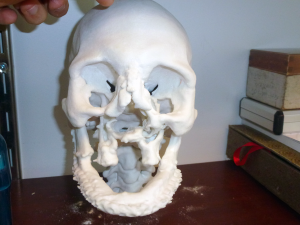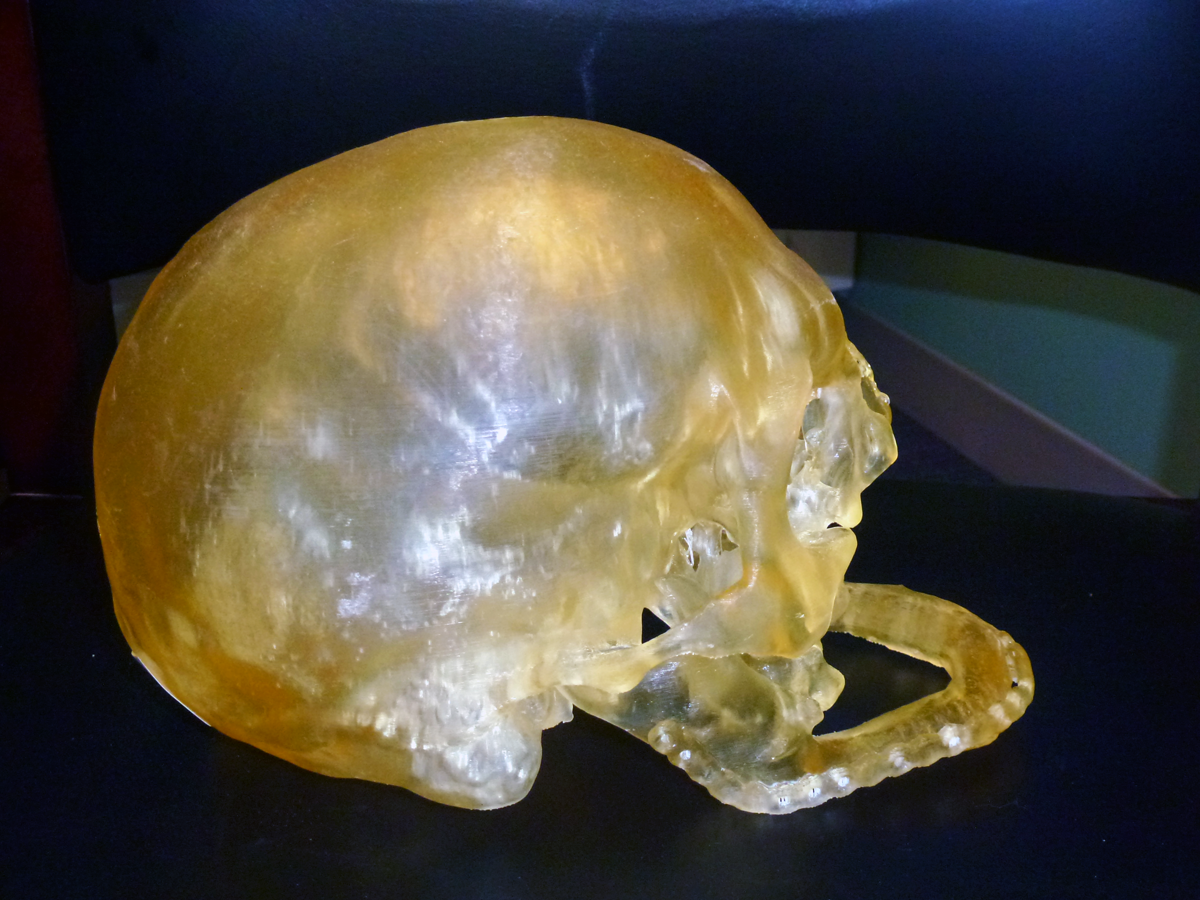Did you ever see Face/Off? This is like that, but actually really good and all of the actors in it are quite talented. Doctors at Brigham and Women’s Hospital in Boston are 3D printing life-size models of patients’ skulls in order to prep for face transplant surgery.
In 2011, doctors from Brigham and Women’s performed the first full facial transplant in the United States and have since performed four more on patients who have lost some or all of their face due to injury or disease. As some of the premier facial transplant surgeons in the country, Drs. Frank J. Rybicki, Bohdan Pomahac, and Amir Imanzadeh may have been the ideal team to conduct a study on the use of 3D printing in facial transplant surgery. Using five Senior surgeons and radiologists conducting five different transplants, Rybicki et al. examined the potential benefits of 3D printing before and during such procedures.
Presenting their findings at the Radiological Society of North America (RSNA), the researchers concluded that 3D printing did significantly enhance face transplant operations, with Dr. Rybicki saying, “This is a complex surgery and its success is dependent on surgical planning. Our study demonstrated that if you use this model and hold the skull in your hand, there is no better way to plan the procedure.”

On top of pre-surgery planning, the models were also useful during the surgeries themselves. Dr. Rybicki says, “You can spin, rotate and scroll through as many CT images as you want but there’s no substitute for having the real thing in your hand. The ability to work with the model gives you an unprecedented level of reassurance and confidence in the procedure.” Rybicki goes into more depth about 3D printing in medicine in the video below:
As a result of the technology’s benefits, Brigham and Women’s Hospital now uses 3D printing routinely for the planning of face transplant surgeries and they may even expand its use to plan other complex surgeries, as well. We’ve seen how 3D printing has been implemented in preparation for other surgical procedures, but with further clinical evidence documented in the annals of medical literature, we can only assume that 3D printing will become common practice in surgery prep in the near future.



